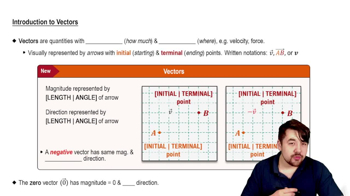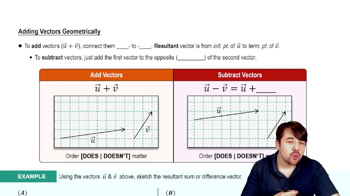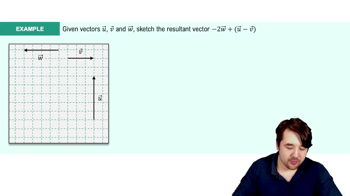Table of contents
- 0. Fundamental Concepts of Algebra3h 29m
- 1. Equations and Inequalities3h 27m
- 2. Graphs1h 43m
- 3. Functions & Graphs2h 17m
- 4. Polynomial Functions1h 54m
- 5. Rational Functions1h 23m
- 6. Exponential and Logarithmic Functions2h 28m
- 7. Measuring Angles40m
- 8. Trigonometric Functions on Right Triangles2h 5m
- 9. Unit Circle1h 19m
- 10. Graphing Trigonometric Functions1h 19m
- 11. Inverse Trigonometric Functions and Basic Trig Equations1h 41m
- 12. Trigonometric Identities 2h 34m
- 13. Non-Right Triangles1h 38m
- 14. Vectors2h 25m
- 15. Polar Equations2h 5m
- 16. Parametric Equations1h 6m
- 17. Graphing Complex Numbers1h 7m
- 18. Systems of Equations and Matrices3h 6m
- 19. Conic Sections2h 36m
- 20. Sequences, Series & Induction1h 15m
- 21. Combinatorics and Probability1h 45m
- 22. Limits & Continuity1h 49m
- 23. Intro to Derivatives & Area Under the Curve2h 9m
14. Vectors
Geometric Vectors
Struggling with Precalculus?
Join thousands of students who trust us to help them ace their exams!Watch the first videoMultiple Choice
Given vectors u⃗ and v⃗, sketch the resultant vector u⃗−v⃗.

A
B
C
D
 Verified step by step guidance
Verified step by step guidance1
Identify the given vectors u⃗ and v⃗ in the image. Vector u⃗ is pointing upwards, and vector v⃗ is pointing to the right.
To find the resultant vector u⃗ - v⃗, you need to reverse the direction of vector v⃗ to get -v⃗. This means vector -v⃗ will point to the left.
Place the tail of vector -v⃗ at the head of vector u⃗. This is because subtracting vectors involves adding the negative of the second vector.
Draw the resultant vector from the tail of u⃗ to the head of -v⃗. This new vector represents u⃗ - v⃗.
Ensure the resultant vector is correctly drawn by checking that it forms a triangle with the original vectors u⃗ and -v⃗, following the vector addition/subtraction rules.

 3:48m
3:48mWatch next
Master Introduction to Vectors with a bite sized video explanation from Patrick
Start learning









